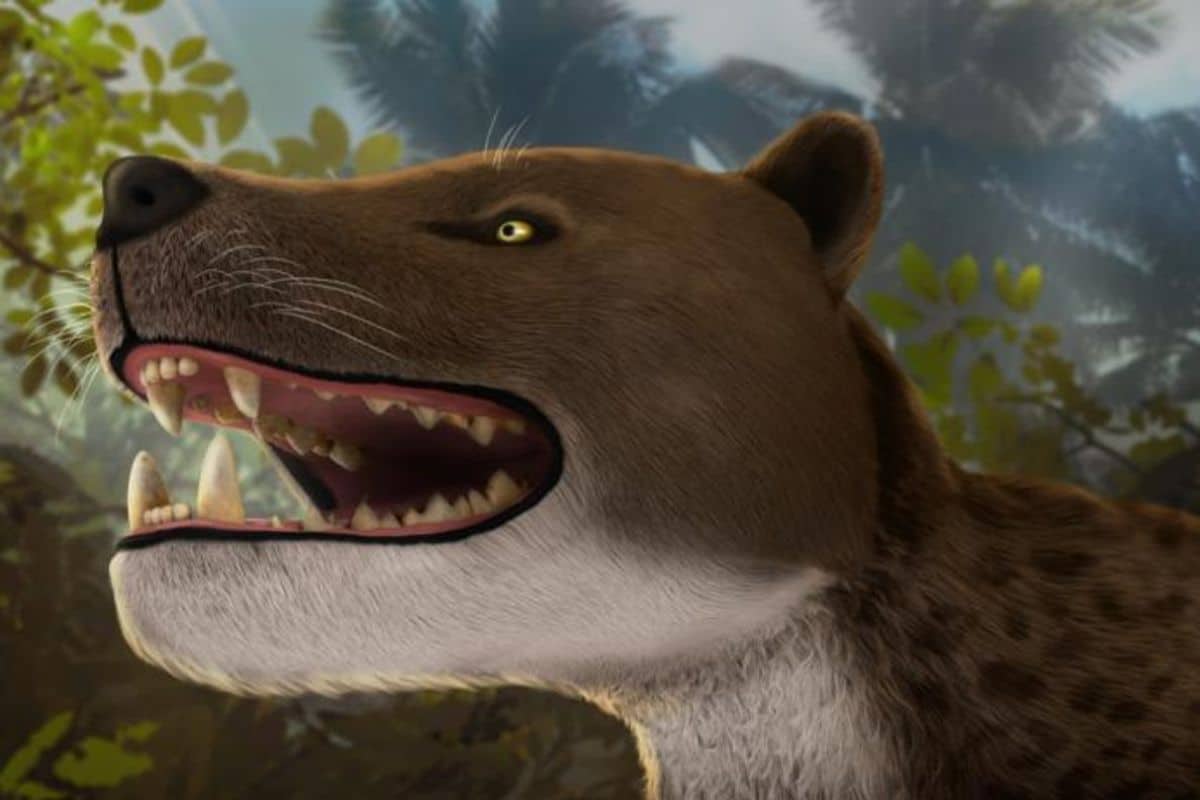
Paleontologists in Egypt have made a groundbreaking discovery by revealing a nearly intact skull of a Hyaenodonta, a now-extinct lineage of apex predators that once ruled African ecosystems. This significant find, located in the Fayum Depression, provides valuable insights into the evolution of these hypercarnivorous creatures that thrived for millions of years before their extinction in the late Miocene.
Dubbed Bastetodon syrtos, this predator, comparable in size to a leopard, may have hunted early elephants, hippopotamuses, and primate precursors. The fossil, detailed in the Journal of Invertebrate Paleontology, establishes an essential connection for understanding the global expansion and eventual demise of these formidable carnivores.
An Apex Hypercarnivore Lost to History
The newly classified Bastetodon syrtos is part of the Hyaenodonta order, a extinct category of carnivorous mammals that are not closely related to today’s hyenas despite their similar names. These animals commanded ancient ecosystems, primarily preying on meat, which made up at least 70 percent of their diet, categorizing them as hypercarnivores. With powerful jaws and sharp teeth, B. syrtos likely stood at the top of the food chain during the Oligocene epoch in Africa.
Unearthed in the fossil-rich Fayum Depression, the skull of B. syrtos offers paleontologists a rare window into an era when these carnivores thrived. Once a verdant habitat, the Fayum region, now a barren desert, was home to diverse life forms, from early proboscideans (ancestors of modern elephants) to distant relatives of contemporary hippos. B. syrtos would have been a skillful hunter, influencing the ecological dynamics of its time.
A Remarkable Find Almost Overlooked
The research team, incorporating experts from Mansoura University and The American University in Cairo, nearly missed this incredible discovery. After meticulously excavating rock formations dating back 30 million years, the team was about to wrap up when one member noticed an unusual set of teeth protruding from the ground.
“Just as we were preparing to finish our exploration, a team member spotted something extraordinary—a set of large teeth emerging from the earth. His enthusiastic exclamation brought us together, marking the start of an exceptional discovery: a nearly complete skull of a prehistoric apex predator, a dream find for any vertebrate paleontologist,” remarked Shorouq Al-Ashqar, the lead author of the study.
The fortuitous find has prompted scientists to reassess previously discovered fossils from related species, including Sekhmetops, yet another hyaenodont named after the lion-headed Egyptian goddess Sekhmet.


The Decline of Hyaenodonts
Despite their massive presence for millions of years, Hyaenodonts ultimately succumbed to extinction during the late Miocene, around 5 to 7 million years ago. Their decline is believed to be due to various factors, including shifting climates, competition from emerging new carnivore species, and possible evolutionary disadvantages.
The emergence of feliforms (ancestors of modern cats) and caniforms (ancestors of dogs and bears) introduced new predators that were better equipped for survival and competition, leading to the eventual decline of the hyaenodonts. These newer carnivores adapted more effectively to their environments and developed superior hunting techniques, which cemented the hyaenodonts’ fate.
The Importance of Bastetodon syrtos
The identification of Bastetodon syrtos marks a significant advancement in understanding ancient predatory creatures and their impact on ecosystems. As one of the most complete skulls of a hyaenodont ever discovered, it offers scientists critical information about the biodiversity and geographical spread of these powerful hunters.
“The uncovering of Bastetodon is a landmark achievement in our exploration of hyaenodont diversity and evolution, as well as their distribution across the globe,” stated Shorouq Al-Ashqar. “We are excited to further our research to explore the intricate connections between these ancient predators and their environments through different periods and regions.”









